
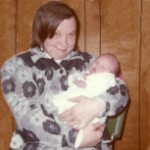 After 27 years, one might think that I would be used to the fact that my sister-in-law, Marlyce Schulenberg is no longer with us, but somehow, I’m not. Oh, I suppose that most of the time my mind has accepted that fact, but…well, Marlyce was such a unique person. She was special in every way. She had a heart of gold, and she loved everyone. That didn’t mean that she didn’t have a temper at all, but then, I think that when she got mad…at least at her siblings, it was because they teased her…or picked a fight with her. I suppose it was a kid thing or a sibling thing, but whatever it was, it drove Marlyce crazy sometimes. And every time Marlyce got mad at her siblings, they were moved to try it again. I suppose that’s just how kids are.
After 27 years, one might think that I would be used to the fact that my sister-in-law, Marlyce Schulenberg is no longer with us, but somehow, I’m not. Oh, I suppose that most of the time my mind has accepted that fact, but…well, Marlyce was such a unique person. She was special in every way. She had a heart of gold, and she loved everyone. That didn’t mean that she didn’t have a temper at all, but then, I think that when she got mad…at least at her siblings, it was because they teased her…or picked a fight with her. I suppose it was a kid thing or a sibling thing, but whatever it was, it drove Marlyce crazy sometimes. And every time Marlyce got mad at her siblings, they were moved to try it again. I suppose that’s just how kids are.
Marlyce’s life was cut short at the tender age of just 39 years, when cancer took her life away from her. Gone were that precious moments we all had with my sweet sister-in-law. It was so hard to believe. She was only 39 years old, younger than my own children are now, and yet she was gone. No more of her smiling face telling me that she had made my favorite chocolate chip cookies, or showing me the latest things she had knitted. Her giggle was now silent. That was 27 years ago, and yet, I can still hear her voice…filled with excitement about those cookies, and I can still hear her annoyed voice telling her littlest brother, Ron to stop picking on her.
It’s strange that the voices of the past still exist in our minds to the degree that it almost seems like we are still 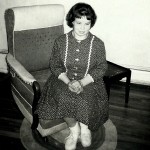
 hearing them out loud. Harder for me to believe than the fact that Marlyce has been gone for 27 years, is the fact that she would have been 66 years old today. She was the oldest child, and with her passing there was a hole left in our lives. Because Marlyce was a special needs child, my in-laws were always concerned about what would happen to her if they passed away. Of course, we would have take care of her, but they needn’t have worried, because she preceded both of them. Today would have been Marlyce’s 66th birthday. Happy birthday in Heaven Marlyce. We love and miss you very much.
hearing them out loud. Harder for me to believe than the fact that Marlyce has been gone for 27 years, is the fact that she would have been 66 years old today. She was the oldest child, and with her passing there was a hole left in our lives. Because Marlyce was a special needs child, my in-laws were always concerned about what would happen to her if they passed away. Of course, we would have take care of her, but they needn’t have worried, because she preceded both of them. Today would have been Marlyce’s 66th birthday. Happy birthday in Heaven Marlyce. We love and miss you very much.
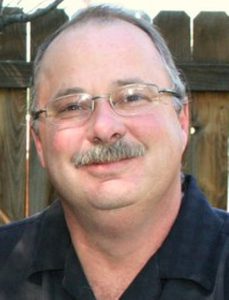 My brother-in-law, Chris Hadlock has had a long and successful career in law enforcement. As a young married man, Chris was working in sales, which as most of us know, is a career that some like and some don’t. Chris was good at it, but the career was not a fulfilling one for him. While they were living in Fort Morgan, Colorado, Chris told my sister, Allyn that he really wasn’t happy doing what he was doing, and simply couldn’t see himself doing it for a long term career. She asked him what he thought he wanted to do, and he told her that while he didn’t think he could be a doctor, he wanted a career in which he could help people. He wanted to be a police officer. I think that prospect really scared my sister at first, and after going on a few ride alongs with my brother-in-law, in which it looked like he might have to pull his gun on someone, I can understand why that could bother my sister. Nevertheless, my brother-in-law was a very capable patrol officer, and with his tall 6’4″ stature, the perpetrators seldom felt inclined to try to go up against him. While some of the shorter officers had to struggle to apprehend a perpetrator, Chris would walk up, and the guy would take one look at him and surrender.
My brother-in-law, Chris Hadlock has had a long and successful career in law enforcement. As a young married man, Chris was working in sales, which as most of us know, is a career that some like and some don’t. Chris was good at it, but the career was not a fulfilling one for him. While they were living in Fort Morgan, Colorado, Chris told my sister, Allyn that he really wasn’t happy doing what he was doing, and simply couldn’t see himself doing it for a long term career. She asked him what he thought he wanted to do, and he told her that while he didn’t think he could be a doctor, he wanted a career in which he could help people. He wanted to be a police officer. I think that prospect really scared my sister at first, and after going on a few ride alongs with my brother-in-law, in which it looked like he might have to pull his gun on someone, I can understand why that could bother my sister. Nevertheless, my brother-in-law was a very capable patrol officer, and with his tall 6’4″ stature, the perpetrators seldom felt inclined to try to go up against him. While some of the shorter officers had to struggle to apprehend a perpetrator, Chris would walk up, and the guy would take one look at him and surrender.
Of course, his height was not the only reason that Chris had no trouble apprehending a suspect, however. He 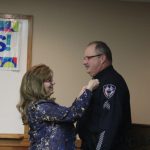 has a very calming nature. Whether he is doing police work, or just calming jangled nerves in a stressful situation, Chris has the unique ability to de-escalate a situation. He has done so on many occasions, both in and out of police work. One occasion I specifically recall was when he went to arrest a man, and when the man opened the door to Chris’ knock, and saw that it was a cop, he tried to shut the door again. Chris simply stuck his Billy Club in the door, and calmly said, you don’t want to do this. The man calmed down, and agreed to go with Chris. He then asked if he could make a phone call first, and because he was cooperative, Chris allowed it, knowing that he would also be allowed a second phone call at the jail. He didn’t have to allow the man to do that, but the arrest went very smoothly and I believe that the main reason is because Chris worked with the man and kept him calm. I also had the opportunity to see police officers who wouldn’t work with a perpetrator, and the whole situation blew up. It’s all in how the officer handles the situation.
has a very calming nature. Whether he is doing police work, or just calming jangled nerves in a stressful situation, Chris has the unique ability to de-escalate a situation. He has done so on many occasions, both in and out of police work. One occasion I specifically recall was when he went to arrest a man, and when the man opened the door to Chris’ knock, and saw that it was a cop, he tried to shut the door again. Chris simply stuck his Billy Club in the door, and calmly said, you don’t want to do this. The man calmed down, and agreed to go with Chris. He then asked if he could make a phone call first, and because he was cooperative, Chris allowed it, knowing that he would also be allowed a second phone call at the jail. He didn’t have to allow the man to do that, but the arrest went very smoothly and I believe that the main reason is because Chris worked with the man and kept him calm. I also had the opportunity to see police officers who wouldn’t work with a perpetrator, and the whole situation blew up. It’s all in how the officer handles the situation.
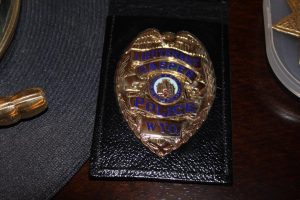 These days, with so much turmoil surrounding our police officers, much of which is not their fault, and yet any arrests are looked at as Police Brutality, my brother-in-law is a police officer who brings peace, a sense of calm, and yet justice. Chris has advanced in his career from a Deputy Sheriff, to a City Patrolman, a Sergeant, and now a Lieutenant over the detectives. He has been a training officer, and a hiring officer, and now he is spending several weeks out of this summer a “Leadership in Policing” class. Chris has been an asset to both of the departments he has served in. He is a born leader and we are very proud of him. Today is Chris’ birthday. Happy birthday Chris!! Have a great day!! We love you!!
These days, with so much turmoil surrounding our police officers, much of which is not their fault, and yet any arrests are looked at as Police Brutality, my brother-in-law is a police officer who brings peace, a sense of calm, and yet justice. Chris has advanced in his career from a Deputy Sheriff, to a City Patrolman, a Sergeant, and now a Lieutenant over the detectives. He has been a training officer, and a hiring officer, and now he is spending several weeks out of this summer a “Leadership in Policing” class. Chris has been an asset to both of the departments he has served in. He is a born leader and we are very proud of him. Today is Chris’ birthday. Happy birthday Chris!! Have a great day!! We love you!!
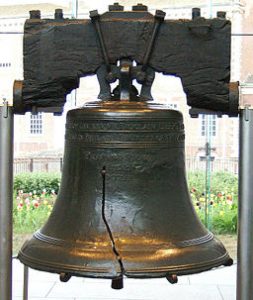 Everyone has heard of the Liberty Bell. The bell was ordered in 1751, to commemorate the 50th anniversary of Pennsylvania’s original constitution. The Pennsylvania Provincial Assembly ordered the 2,000 pound copper and tin bell. The bell was placed in the Pennsylvania State House, which is now known as Independence Hall. The bell rang out summoning citizens to the first public reading of the Declaration of Independence, by Colonel John Nixon. The document was adopted by delegates to the Continental Congress meeting in the State House on July 4th, however, the Liberty Bell, inscribed with the Biblical quotation, “Proclaim Liberty Throughout All the Land unto All the Inhabitants Thereof,” was not rung until the Declaration of Independence was returned from the printer on July 8th.
Everyone has heard of the Liberty Bell. The bell was ordered in 1751, to commemorate the 50th anniversary of Pennsylvania’s original constitution. The Pennsylvania Provincial Assembly ordered the 2,000 pound copper and tin bell. The bell was placed in the Pennsylvania State House, which is now known as Independence Hall. The bell rang out summoning citizens to the first public reading of the Declaration of Independence, by Colonel John Nixon. The document was adopted by delegates to the Continental Congress meeting in the State House on July 4th, however, the Liberty Bell, inscribed with the Biblical quotation, “Proclaim Liberty Throughout All the Land unto All the Inhabitants Thereof,” was not rung until the Declaration of Independence was returned from the printer on July 8th.
The bell was made of inferior materials, and cracked during the first test. It was recast twice and finally hung from the State House steeple in June 1753. The bell was rung on special occasions, such as when King George III ascended to the throne in 1761, and to call the people together to discuss such important things as the controversial Stamp Act of 1765. With the outbreak of the American Revolution in April 1775, the bell was rung to announce the battles of Lexington and Concord. Of course, the most famous time it was rung was July 8, 1776, when it summoned Philadelphia citizens for the first reading of the Declaration of Independence.
When the British were advancing on Philadelphia in the fall of 1777, the bell was removed and hidden in Allentown to protect it from being melted down by the British to be used for cannons. Following the defeat of the British in 1781, the bell was returned to it’s place in Philadelphia which was the nation’s capital from 1790 to 1800. In addition to marking important events, the bell was used as a part of the celebrations such as George Washington’s birthday on February 22, and Independence Day on July 4. In 1839, bell was first given it’s name when it was coined the Liberty Bell in a poem.
As to the crack that finally made the Liberty Bell unsuitable for ringing, there has been some dispute. It was 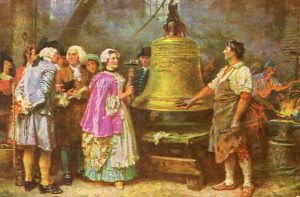 finally agreed upon that the bell suffered a major break while tolling for the funeral of the chief justice of the United States, John Marshall, in 1835, and in 1846 the crack expanded to its present size while in use to mark Washington’s birthday. After that date, it was decided that the bell was unsuitable for ringing, but it was still ceremoniously tapped on occasion to commemorate important events. On June 6, 1944, when Allied forces invaded France, the sound of the bell’s dulled ring was broadcast by radio across the United States. In 1976, the Liberty Bell was moved to a new pavilion about 100 yards from Independence Hall in preparation for America’s bicentennial celebrations. The Liberty Bell will always be a symbol of patriotism and liberty in my mind.
finally agreed upon that the bell suffered a major break while tolling for the funeral of the chief justice of the United States, John Marshall, in 1835, and in 1846 the crack expanded to its present size while in use to mark Washington’s birthday. After that date, it was decided that the bell was unsuitable for ringing, but it was still ceremoniously tapped on occasion to commemorate important events. On June 6, 1944, when Allied forces invaded France, the sound of the bell’s dulled ring was broadcast by radio across the United States. In 1976, the Liberty Bell was moved to a new pavilion about 100 yards from Independence Hall in preparation for America’s bicentennial celebrations. The Liberty Bell will always be a symbol of patriotism and liberty in my mind.
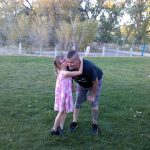 Kids follow a typical pattern in the things they do, but that in no way makes kids the same. Some kids are too busy with their own things to take much notice of the aunts and uncles around them, while others, like my grand niece, Audrianna Masterson, always make an effort to come and say hello, followed by a hug, of course. Anna, as she has been nicknamed, is a very gentle soul, with a loving spirit. Whenever I am around her, usually at least twice a week, she just warms my heart with her gentle, loving ways.
Kids follow a typical pattern in the things they do, but that in no way makes kids the same. Some kids are too busy with their own things to take much notice of the aunts and uncles around them, while others, like my grand niece, Audrianna Masterson, always make an effort to come and say hello, followed by a hug, of course. Anna, as she has been nicknamed, is a very gentle soul, with a loving spirit. Whenever I am around her, usually at least twice a week, she just warms my heart with her gentle, loving ways.
Anna loves to read, and is spending much of this summer in a reading contest to see how many books she can read. So far she has won a t-shirt for her efforts, and she was so proud of it, that she had to make sure I saw it. Anna really loves learning in general. During the school year, when I see her, she like to sit with me and do her homework. Then she has  me check it for her. I don’t really think it’s the homework help she is after, but rather the time she and I can spend together.
me check it for her. I don’t really think it’s the homework help she is after, but rather the time she and I can spend together.
Don’t get me wrong, because Anna love to play too. She doesn’t care if the kids are older, like her cousins, Xander, Zach, and Isaac Spethman, or her brother Matthew Masterson, or her little cousin Aleesia Spethman, who is just three, and even her cousin, Shai Royce, who is twenty. She also likes hanging out with her big sister, Raelynn Masterson, when she has time for her that is. Raelynn is in middle school now, so that is a bit limited, nevertheless, Anna looks up to her big sister.
Anna may not be in the double digit age group yet, but she is coming into her own, nevertheless. I see her personality coming out more and more. Anna is not a drama queen or a princess. That just isn’t her style. She  is a good girl who loves to help others, especially her parents. Anna is also a lot like her Great Aunt Caryn in that she is a deep thinker. She reasons things out in her own mind. She concentrates on the task at hand, or just on the thoughts running through her own head. Being a thinker and a concentrator can make people wonder about you. Some might think you are mad or that you are stand offish, when what you really are is deep in your own world of thoughts. Some people may not get that, but I get it, Anna, because you remind me of me…and I don’t think that is a bad thing at all. Maybe you will be a writer too, telling others about your own thoughts, memories, and family. Today is Anna’s 9th birthday. Happy birthday Anna!! Have a great day!! We love you!!
is a good girl who loves to help others, especially her parents. Anna is also a lot like her Great Aunt Caryn in that she is a deep thinker. She reasons things out in her own mind. She concentrates on the task at hand, or just on the thoughts running through her own head. Being a thinker and a concentrator can make people wonder about you. Some might think you are mad or that you are stand offish, when what you really are is deep in your own world of thoughts. Some people may not get that, but I get it, Anna, because you remind me of me…and I don’t think that is a bad thing at all. Maybe you will be a writer too, telling others about your own thoughts, memories, and family. Today is Anna’s 9th birthday. Happy birthday Anna!! Have a great day!! We love you!!
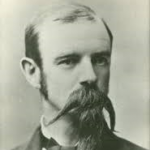 In my many hikes to the Harney Peak lookout, I have noticed many times the marker there for Dr Valentine McGillycuddy. I suppose that the main reason it has stuck in my head is because of my grandfather, George Byer, who used to call our house and ask for Mrs McGillycuddy. We always knew it was Grandpa, but we went along with the joke anyway. Of course, Grandpa’s Mrs McGillycuddy was fictional, while Valentine McGillycuddy was a real person. I did some research a few years ago, and found out that Valentine McGillycuddy was the first white man to climb all the way to the top of Harney Peak. Many have followed in his footsteps, myself and my husband included. Harney Peak, so named in the late 1850s by Lieutenant Gouverneur K. Warren in honor of General William S. Harney, who was commander of the military in the Black Hills area. The Lakota Sioux Indians called it Hinhan Kaga, which means “Making of Owls” in English. I think I like that name.
In my many hikes to the Harney Peak lookout, I have noticed many times the marker there for Dr Valentine McGillycuddy. I suppose that the main reason it has stuck in my head is because of my grandfather, George Byer, who used to call our house and ask for Mrs McGillycuddy. We always knew it was Grandpa, but we went along with the joke anyway. Of course, Grandpa’s Mrs McGillycuddy was fictional, while Valentine McGillycuddy was a real person. I did some research a few years ago, and found out that Valentine McGillycuddy was the first white man to climb all the way to the top of Harney Peak. Many have followed in his footsteps, myself and my husband included. Harney Peak, so named in the late 1850s by Lieutenant Gouverneur K. Warren in honor of General William S. Harney, who was commander of the military in the Black Hills area. The Lakota Sioux Indians called it Hinhan Kaga, which means “Making of Owls” in English. I think I like that name.
Dr McGillycuddy first came to the Black Hills with the Jenny-Newton Party. His mission was to survey and map 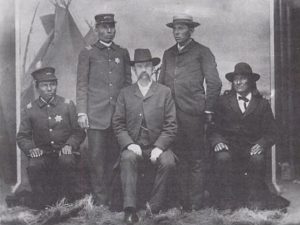
 the Black Hills, and to confirm that gold had been discovered there. It was during this excursion that he climbed Harney Peak. There had been other white men to climb the mountain, including General George Custer, but they all stopped just short of the peak, because it was to difficult to make it…something I think I can relate to. McGillycuddy angled a felled tree into a crevice in the granite, and made his way to the very top. I can totally feel his elation and sense of accomplishment, since I have felt the same way myself. My guess is that it would not be the last trip he made to the top either. That mountain has a way of calling you back for a second and even third or more visits.
the Black Hills, and to confirm that gold had been discovered there. It was during this excursion that he climbed Harney Peak. There had been other white men to climb the mountain, including General George Custer, but they all stopped just short of the peak, because it was to difficult to make it…something I think I can relate to. McGillycuddy angled a felled tree into a crevice in the granite, and made his way to the very top. I can totally feel his elation and sense of accomplishment, since I have felt the same way myself. My guess is that it would not be the last trip he made to the top either. That mountain has a way of calling you back for a second and even third or more visits.
McGillycuddy became a friend to Crazy Horse, and in fact was with him when he died after being stabbed at Fort Robinson, Nebraska in 1877. After that time, the Lakota Sioux named McGillycuddy Tasunka Witko Kola, 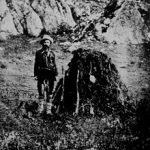 which means “Crazy Horse’s Friend” in English. Other Native Americans named McGillycuddy Wasicu Wakan, which means “Holy White Man” in English. Dr Valentine McGillycuddy did lead a very amazing life. His first wife died, and he moved to San Francisco to continue his medical practice. There he married Julia Blanchard. After he passed away in 1939, Julia wrote a book about his life called “McGillycuddy, Agent” which was how he signed his name during his favorite role in life. He was a friend to the Indians, and did his best to educate them by building a school for the children. He was a calming influence on the relationship between the Indians and the White Man. It is quite fitting then that his ashes be entombed on the mountain that he loved. It gives a totally different feeling to the little plaque that is there…if one researches it.
which means “Crazy Horse’s Friend” in English. Other Native Americans named McGillycuddy Wasicu Wakan, which means “Holy White Man” in English. Dr Valentine McGillycuddy did lead a very amazing life. His first wife died, and he moved to San Francisco to continue his medical practice. There he married Julia Blanchard. After he passed away in 1939, Julia wrote a book about his life called “McGillycuddy, Agent” which was how he signed his name during his favorite role in life. He was a friend to the Indians, and did his best to educate them by building a school for the children. He was a calming influence on the relationship between the Indians and the White Man. It is quite fitting then that his ashes be entombed on the mountain that he loved. It gives a totally different feeling to the little plaque that is there…if one researches it.

 Two years ago, my husband, Bob and I intended to take our favorite hike…Harney Peak in the Black Hills of South Dakota. That hike didn’t go so well, or at least we did not succeed in completing the full hike. The Lookout Tower eluded us in that, we reached it’s base, but could not go on to the top. The reasons were varied, but I felt like the main reason was that I was not in good enough shape for this tough trail. Bob thought otherwise, and looking back, I have to think that, at least in part, he was right. Bob thought that the heat of the day, combined with the lack of trees near the top since the pine beetle infestation, sapped our energy making it almost impossible to finish the hike. We had plenty of water, and food too, just no more energy…and we still had the 3.4 mile hike back staring us in the face.
Two years ago, my husband, Bob and I intended to take our favorite hike…Harney Peak in the Black Hills of South Dakota. That hike didn’t go so well, or at least we did not succeed in completing the full hike. The Lookout Tower eluded us in that, we reached it’s base, but could not go on to the top. The reasons were varied, but I felt like the main reason was that I was not in good enough shape for this tough trail. Bob thought otherwise, and looking back, I have to think that, at least in part, he was right. Bob thought that the heat of the day, combined with the lack of trees near the top since the pine beetle infestation, sapped our energy making it almost impossible to finish the hike. We had plenty of water, and food too, just no more energy…and we still had the 3.4 mile hike back staring us in the face.
After that hike, I wondered if I would be able to get myself back in shape for the next attempt. It was a low point in my hiking career. Six months ago, I made the decision that it was time to get back in shape, and to go after the Giant that had been looming over me for a year and a half. I started walking again and eating right, and before long I was doggedly walking 30,000 steps every day. Then shin splints hit me like a bomb. I was determined to continue walking so my training wouldn’t suffer, but after three weeks, I knew that I was going to have to do something different. Nevertheless, I tried to keep going, until my granddaughter, Shai Royce made me promise to take the next week off. Thankfully a week was all it took, and I was back to walking 25000 steps a day in a couple of weeks.
Still, the Giant loomed over me for the next month. Our trip was coming, and I wanted that mountain. The Harney Peak hike belonged to me. I have hiked it at least fifteen times over the last 21 years. I had 
 paid my dues, and I did not want to let one bad experience take it away from me. We decided to head out to hike early…6:00am or so. In reality, we began our hike 6:37am, and with the light cloud cover and the earliness of our hiking time, we were very comfortable. The hike was hard…it always is, but in two and a half hours, we found ourselves at the top standing in front of the lookout tower. We made it!! We had conquered the beast. The Giant no longer loomed over me. I know that there is no reason that I can’t continue to hike Harney Peak for years to come, because with hard work…there is nothing I can’t do.
paid my dues, and I did not want to let one bad experience take it away from me. We decided to head out to hike early…6:00am or so. In reality, we began our hike 6:37am, and with the light cloud cover and the earliness of our hiking time, we were very comfortable. The hike was hard…it always is, but in two and a half hours, we found ourselves at the top standing in front of the lookout tower. We made it!! We had conquered the beast. The Giant no longer loomed over me. I know that there is no reason that I can’t continue to hike Harney Peak for years to come, because with hard work…there is nothing I can’t do.
 For me, there is no more perfect way to celebrate Independence Day that to come to the Black Hills of South Dakota. I can’t think of a more patriotic place that is close enough to my home in Wyoming to be able to go to each year. The Black Hills is a shrine to patriotism. Mount Rushmore…home to the faces of four presidents, George Washington, Thomas Jefferson, Theodore Roosevelt, and Abraham Lincoln…brings home that spirit of patriotism that lives inside me. I love going to Mount Rushmore, and every time I go, I feel a sense of awe. These great men did the things necessary to make our country great. We don’t often think about the sacrifice a president made, but George Washington was a great soldier before he was president. He, along with the help of an ancestor of my husband, Bob’s, Henry Knox worked out a strategy to win the Revolutionary War, thereby winning our independence. Thomas Jefferson was the author of the Declaration of Independence. Abraham Lincoln was the
For me, there is no more perfect way to celebrate Independence Day that to come to the Black Hills of South Dakota. I can’t think of a more patriotic place that is close enough to my home in Wyoming to be able to go to each year. The Black Hills is a shrine to patriotism. Mount Rushmore…home to the faces of four presidents, George Washington, Thomas Jefferson, Theodore Roosevelt, and Abraham Lincoln…brings home that spirit of patriotism that lives inside me. I love going to Mount Rushmore, and every time I go, I feel a sense of awe. These great men did the things necessary to make our country great. We don’t often think about the sacrifice a president made, but George Washington was a great soldier before he was president. He, along with the help of an ancestor of my husband, Bob’s, Henry Knox worked out a strategy to win the Revolutionary War, thereby winning our independence. Thomas Jefferson was the author of the Declaration of Independence. Abraham Lincoln was the  man responsible for ending slavery in the United States, and Teddy Roosevelt was chosen because of his contributions to business, conservation and the creation of the Panama Canal. These were four men who saw just how great this nation could be, and who worked to make sure that it always would be a great Constitutional Republic.
man responsible for ending slavery in the United States, and Teddy Roosevelt was chosen because of his contributions to business, conservation and the creation of the Panama Canal. These were four men who saw just how great this nation could be, and who worked to make sure that it always would be a great Constitutional Republic.
For most of us, the Independence Day celebration would not be complete without a grand fireworks display. I have been to a lot of fireworks displays in my lifetime, but few can match the display that takes place every year in Custer, South Dakota. They start by doing the roll call of the states. I have been amazed over the years that almost every state is represented. Then the fireworks begin, with synchronized music, that is the best mix I have ever heard. Of course, every patriotic song in existence is sung, and the display seems to go on for hours. By the time the evening is over, you truly feel like you have celebrated our nation’s birth. I always walk away feeling more patriotic than when I arrived…if that’s possible.

I believe that the United States of America is one of the greatest countries on earth, and in the past few years, people have been trying to tear it down, and make us believe that we are not a great nation with great people. I don’t like that. I don’t like that our government tries to take away our rights, and tries to change the fabric of this nation into a nation of whiney babies that I hardly recognize. I hate to make Independence Day a story about the election, but it’s time to “Make America Great Again.” It’s time to fight for our Constitution, and the freedoms it provides. If we don’t fight for those rights now, they will be gone forever, and with them would go the nation we love. I pray that you all have a very safe and happy Independence Day!!
 My grand nephew, Lucas Iverson is turning five today. Lucas is a special needs child, who has Down’s Syndrome, but don’t think that a little thing like that slows him down, because it doesn’t. Things are harder for Lucas, but Lucas is a go getter, and the word quit is not in his vocabulary. Lucas is learning to walk, and he walks along the walls and navigates all over the house pretty easily. Of course, there is a motivation for that, because Lucas has a little sister named Zoey, who he absolutely loves, and he follows her all over the house. Zoey is coming up on a year old now, so she is pretty mobile. That is a good thing,
My grand nephew, Lucas Iverson is turning five today. Lucas is a special needs child, who has Down’s Syndrome, but don’t think that a little thing like that slows him down, because it doesn’t. Things are harder for Lucas, but Lucas is a go getter, and the word quit is not in his vocabulary. Lucas is learning to walk, and he walks along the walls and navigates all over the house pretty easily. Of course, there is a motivation for that, because Lucas has a little sister named Zoey, who he absolutely loves, and he follows her all over the house. Zoey is coming up on a year old now, so she is pretty mobile. That is a good thing,  because that helps motivate Lucas…not that he needs motivating. Lucas never thinks about whether or not things are hard…much less if he can do it. He just tries to do his very best, and besides that, he’s just having fun anyway.
because that helps motivate Lucas…not that he needs motivating. Lucas never thinks about whether or not things are hard…much less if he can do it. He just tries to do his very best, and besides that, he’s just having fun anyway.
Lucas is going to pre-school now, and he really enjoys it. He loves people in general, and loves to give everybody hugs and kisses. Lucas especially loves hugging his grandma, my sister-in-law, Rachel Schulenberg. Rachel tells me that when he hugs her, he literally melts into her neck. It makes Rachel feel so loved. There really is nothing like having a grandchild like that…one that just loves to hug you and show how much you mean to them. Lucas is that kind of kid. He is that way with everyone…but his grandma is special, of course.
how much you mean to them. Lucas is that kind of kid. He is that way with everyone…but his grandma is special, of course.
Lucas loves to go camping and fishing with his family. Sitting around the campfire listening to everyone talk and laugh is so much fun for him. Some things are harder for Lucas to do, and require the help of his parents, but he is so happy just to be out doing things with them, that it doesn’t seem like work to him. Like any kid, doing things with his dad…like fishing is just fun, and really isn’t that what life is all about for a kid…just having fun. Today is Lucas’ birthday. Happy birthday Lucas!! Have a great day!! We love you!!

 My niece, Chelsea Hadlock joined our family eight years ago, when she married my nephew, Ryan. Chelsea is a beautiful girl, inside and out. Over the years that she has been in our family, we have watched the changes that have taken place in her. Besides the visible changes, such as becoming a mother and the natural momness that comes with being a mom, I have seen a deeper change in her that has endeared her to our whole family…or maybe it isn’t a change in her at all, but rather just us getting to know her more and more. Chelsea has a sweetness about her that really shines through in all she does. She is thoughtful and kind, and totally dedicated to her little family and the rest of our family, as well.
My niece, Chelsea Hadlock joined our family eight years ago, when she married my nephew, Ryan. Chelsea is a beautiful girl, inside and out. Over the years that she has been in our family, we have watched the changes that have taken place in her. Besides the visible changes, such as becoming a mother and the natural momness that comes with being a mom, I have seen a deeper change in her that has endeared her to our whole family…or maybe it isn’t a change in her at all, but rather just us getting to know her more and more. Chelsea has a sweetness about her that really shines through in all she does. She is thoughtful and kind, and totally dedicated to her little family and the rest of our family, as well.
Chelsea has a creative side that colors her home with a variety of looks and love. Chelsea loves the different holidays, and decorates for each one…often using a different theme each year. While most of us put up the Christmas tree and decorations and call it good, Chelsea decides what her decorations will depict that year. She has done things like a red Christmas and Disney, to make it special and unique. Halloween find her not only dressing up her kids in great costumes, but herself too. As I said, she is very creative.
Chelsea loves camping, hiking, and the outdoors in general. I totally get that. She loves to take her children, Ethan and Aurora in little hikes that end in a picnic. They have such a good time. Kids need that in the summer. Too much sitting around the house makes for a boring summer vacation. And of course, Chrlsea takes lots of pictures so that the rest of us can share in her family’s adventures. It is such a treat to open Facebook and see new pictures of the Hadlock family adventures.
Ryan fell in love with Chelsea almost from the moment he laid eyes on her. And she felt the same way about 
 him. Theirs has continued to be a fun filled life, and what better thing to have in your marriage. If the marriage is always work, with no play and no teasing, what does it really have. Thsnkfully that laughter and fun decorate their marriage just like Chelsea decorated their home. She is the perfect wife for Ryan, and a great mom to their children. Oh, and did I forget to mention that Chelsea is a pretty fair mechanic too. Brakes are definitely no match for Chelsea, because she got this!! She’s multi-talented!! Today is Chelsea’s birthday. Happy birthday Chelsea!! Have a great day!! We love you!!
him. Theirs has continued to be a fun filled life, and what better thing to have in your marriage. If the marriage is always work, with no play and no teasing, what does it really have. Thsnkfully that laughter and fun decorate their marriage just like Chelsea decorated their home. She is the perfect wife for Ryan, and a great mom to their children. Oh, and did I forget to mention that Chelsea is a pretty fair mechanic too. Brakes are definitely no match for Chelsea, because she got this!! She’s multi-talented!! Today is Chelsea’s birthday. Happy birthday Chelsea!! Have a great day!! We love you!!
 For as long as I have known my husband, Bob Schulenberg, he has had a job. He is a hard working man, who never quits…until now. Today, for the first time since he was sixteen years old, Bob doesn’t have a job to go to anymore. In the years I have known and been married to Bob, he has had only two jobs. The first in a uranium mine where he worked from 1973 to 1989, when he went to work for the City of Casper. He has worked at the City of Casper for a little over 27 years. One of the girls in human resources, Tracy did a little bit of figuring to come up with some interest figures about how much time that 27 years really is. According to her calculations, for Bob’s May 1, 1989 start date through his last working day for the City of Casper, June 30, 2016, figures up to be 9,922 days, or 14,287,680 minutes, or 857,260,800 seconds. Anyway you look at it, 27 years is an incredible accomplishment.
For as long as I have known my husband, Bob Schulenberg, he has had a job. He is a hard working man, who never quits…until now. Today, for the first time since he was sixteen years old, Bob doesn’t have a job to go to anymore. In the years I have known and been married to Bob, he has had only two jobs. The first in a uranium mine where he worked from 1973 to 1989, when he went to work for the City of Casper. He has worked at the City of Casper for a little over 27 years. One of the girls in human resources, Tracy did a little bit of figuring to come up with some interest figures about how much time that 27 years really is. According to her calculations, for Bob’s May 1, 1989 start date through his last working day for the City of Casper, June 30, 2016, figures up to be 9,922 days, or 14,287,680 minutes, or 857,260,800 seconds. Anyway you look at it, 27 years is an incredible accomplishment.
Bob has never been a man who sits around, and his retirement will be no different. He loves working on cars for family and friends, and already has several jobs lined up to keep him busy…after he takes a couple of weeks off that is. After all, he is going to have to get used to this new direction his life is taking, and what better way than to relax for a couple of weeks before diving into the new ventures he is bound to take on.
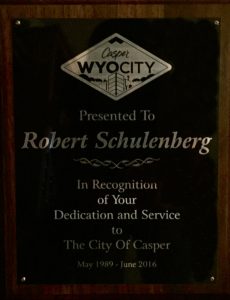
Of course, being retired will mean that he has more time for our favorite pastime…hiking. We are planning several trips in the near future to go hiking, some just for a weekend, because, after all, I am not retired yet, and others for a week at a time. Of course, no matter how long we are able to go for, we always enjoy our hiking. We love getting out in nature, and especially getting back in the trees.
I don’t know if Bob feels like not having a job is as strange as I feel like it is, but I’m sure he will quickly get used to it. It’s like getting a drivers license. At first it’s strange to be free to go when you want to, but then you get used to it, and it’s just normal. Before very long, retirement will be the same. So without further ado, Bob is calling it a career, and now he is off to new adventures. Congratulations on your retirement Honey!! I know your new adventures are going to be amazing. You’ve earned it.

